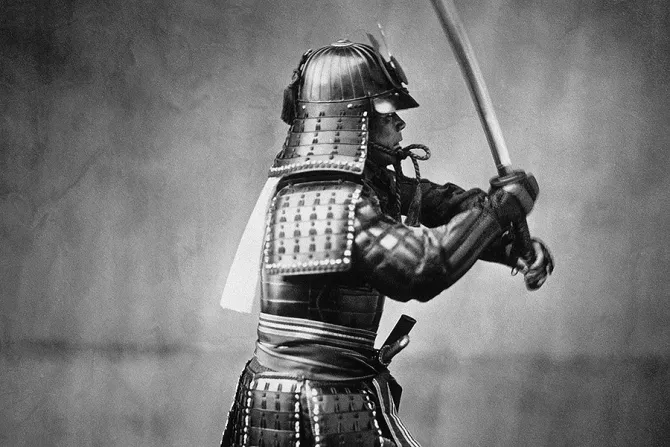Tokyo, Japan, Feb 8, 2017 / 03:02 am
A 17th century Catholic Samurai and martyr was beatified during a Mass in Osaka, Japan on Tuesday.
Cardinal Angelo Amato, Prefect of the Vatican's Congregation for the Causes of Saints, presided over the Beatification Mass of Justo Takayama Ukon, who was declared a martyr by Pope Francis in January last year.
Takayama Ukon was born in 1552 in Japan during the time when Jesuit missionaries were being introduced within the country. By the time Takayama was 12, his father had converted to Catholicism and had his son baptized as "Justo" by the Jesuit Fr. Gaspare di Lella.
Takayama's position in Japanese society as daimyo (a feudal lord) allowed him many benefits, such as owning grand estates and raising vast armies. As a Catholic, Takayama used his power to support and protect the short-lived missionary expansion within Japan, influencing the conversion of thousands of Japanese.
When a time of persecution set in within the country under the reign of Japan's chancellor Toyotomi Hideyoshi in 1587, many newly-converted Catholics abandoned their beliefs.
By the 1620s, most missionaries were either driven out of the country or into underground ministry. These missionary priests would have been of the same era as those featured in the recent movie "Silence" by director Martin Scorsese. Although the film is based on a fictional novel by the Japanese author Shusaku Endo, many of the events and people depicted in "Silence" are real.
Instead of denying their faith, Takayama and his father left their prestigious position in society and chose a life of poverty and exile. Although many of his friends tried to persuade Takayama to deny Catholicism, he remained strong in his beliefs.
Takayama "did not want to fight against other Christians, and this led him to live a poor life, because when a samurai does not obey his 'chief,' he loses everything he has," Fr. Anton Witwer, a general postulator of the Society of Jesus, told CNA in 2014.
Ten years passed, and the chancellor became more fierce in his persecution against Christians. He eventually crucified 26 Catholics, and by 1614, Christianity in Japan was completely banned.
The new boycott on Christianity forced Takayama to leave Japan in exile with 300 other Catholics. They fled to the Philippines, but not long after his arrival, Takayama died on February 3, 1615.
In 2013, the Japanese bishops' conference submitted the lengthy 400-page application for the beatification of Takayama to the Congregation for the Causes of Saints. On Jan. 22, 2016, Takayama's advancement in the cause for canonization was further promulgated when Pope Francis approved his decree of martyrdom.
"Since Takayama died in exile because of the weaknesses caused by the maltreatments he suffered in his homeland, the process for beatification is that of a martyr," Fr. Witwer explained.
Takayama's life exemplifies the Christian example of "a great fidelity to the Christian vocation, persevering despite all difficulties," Fr. Witwer continued.
"As a Christian, as a leader, as a cultural person, as a pioneer of adaptation, Ukon is a role model and there are many things we can learn from him," Father Renzo De Luca, and Argentinian Jesuit and the director of the 26 Martyrs Museum in Nagasaki, told Vatican Radio.
"In this era of political distrust, I think he will be helpful for people other than Christians."


